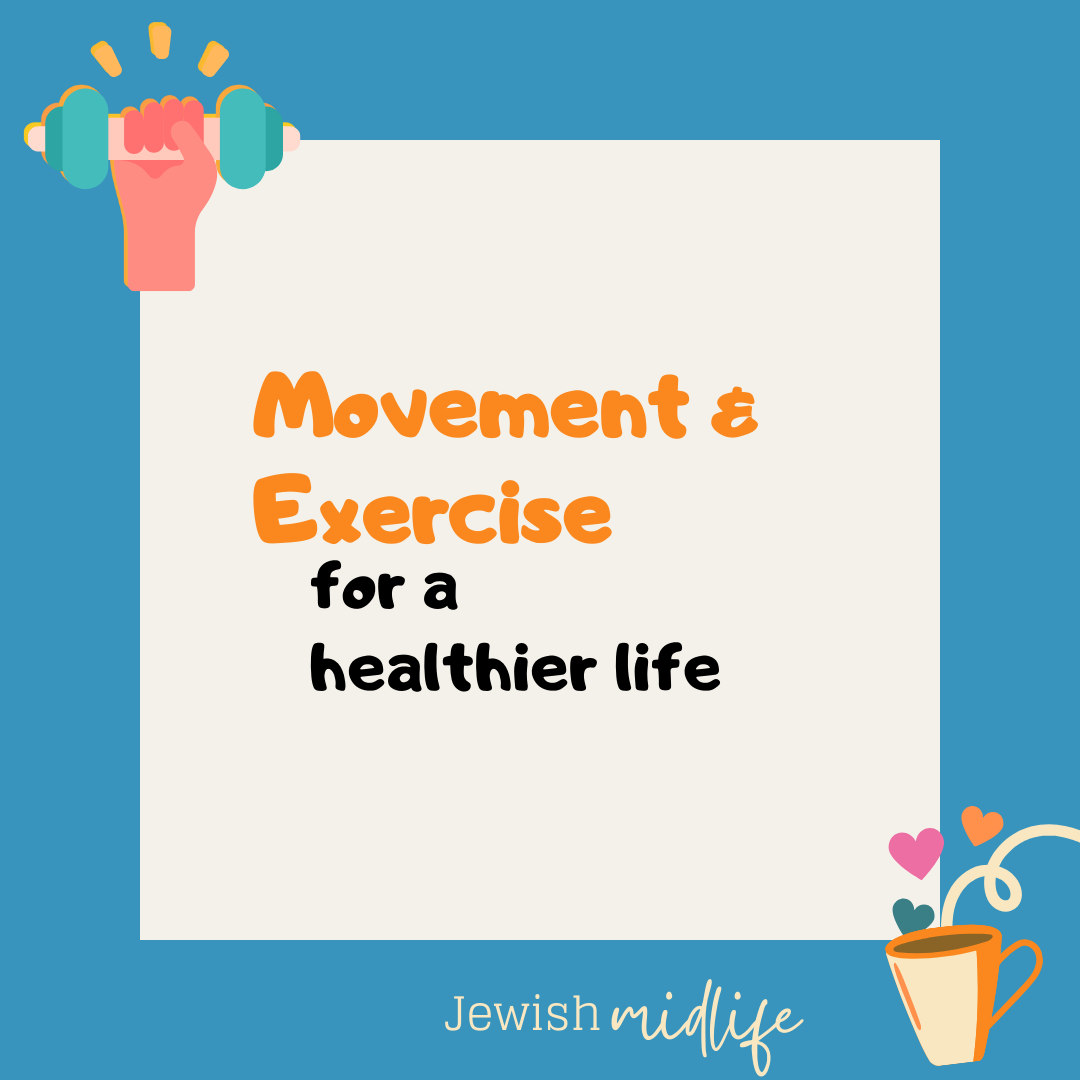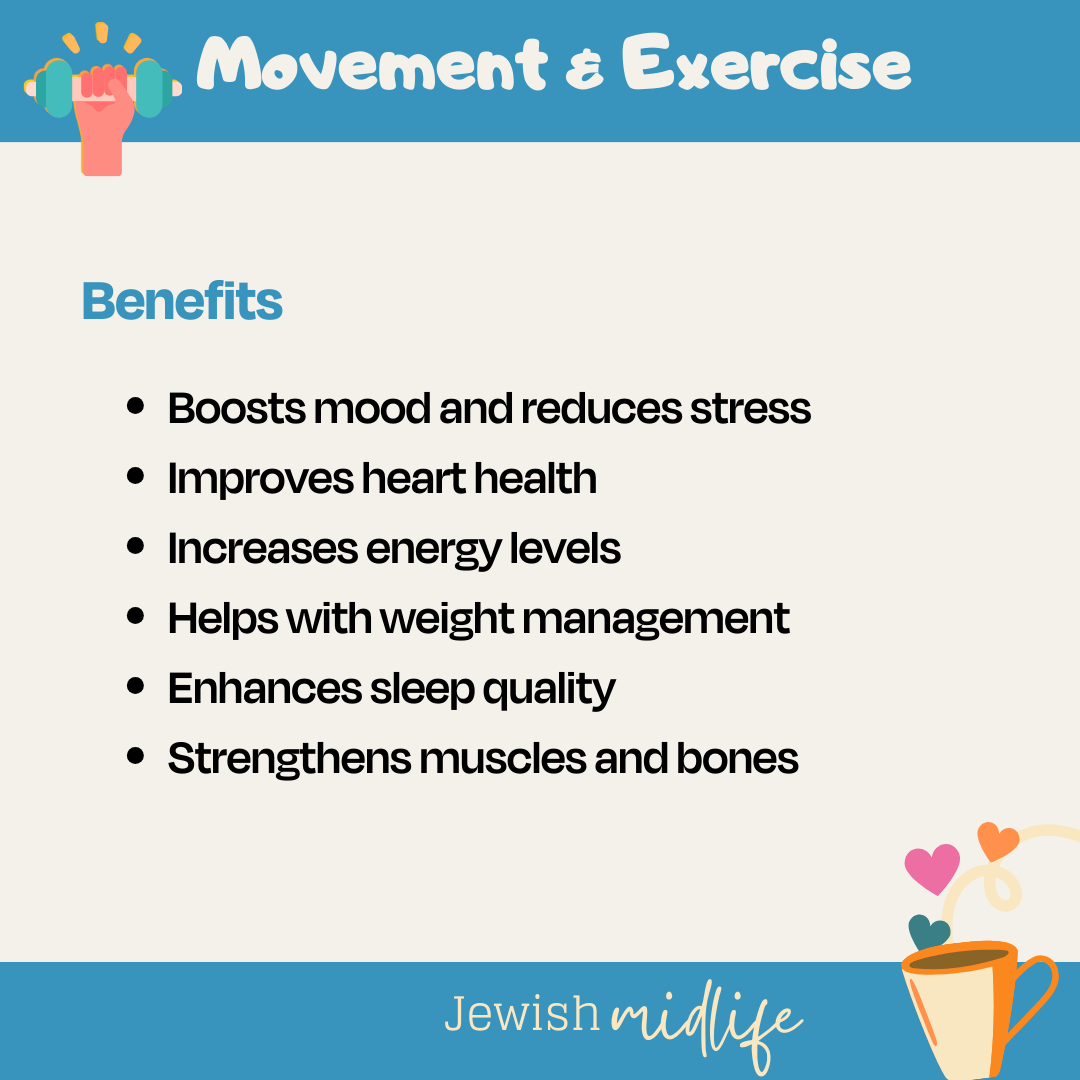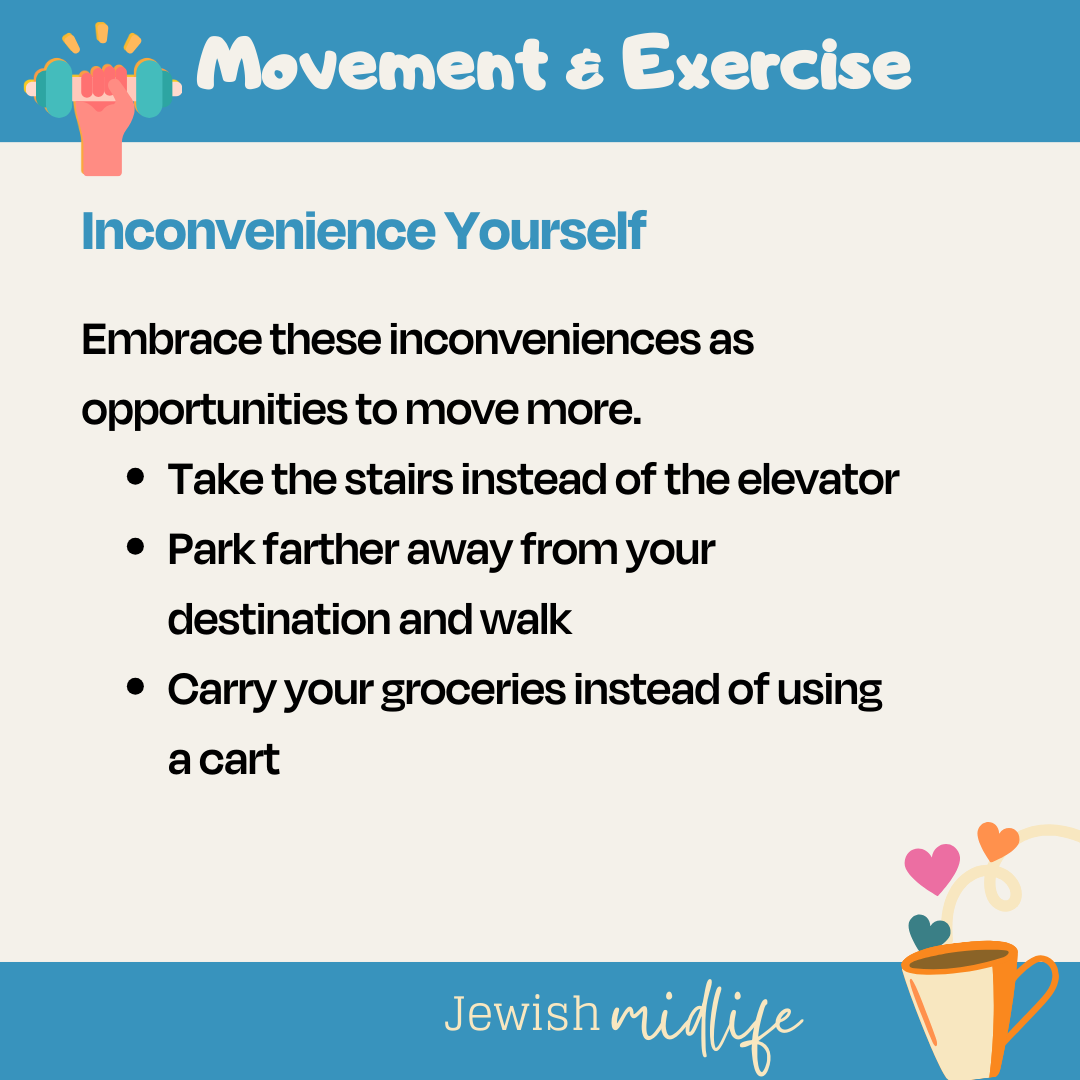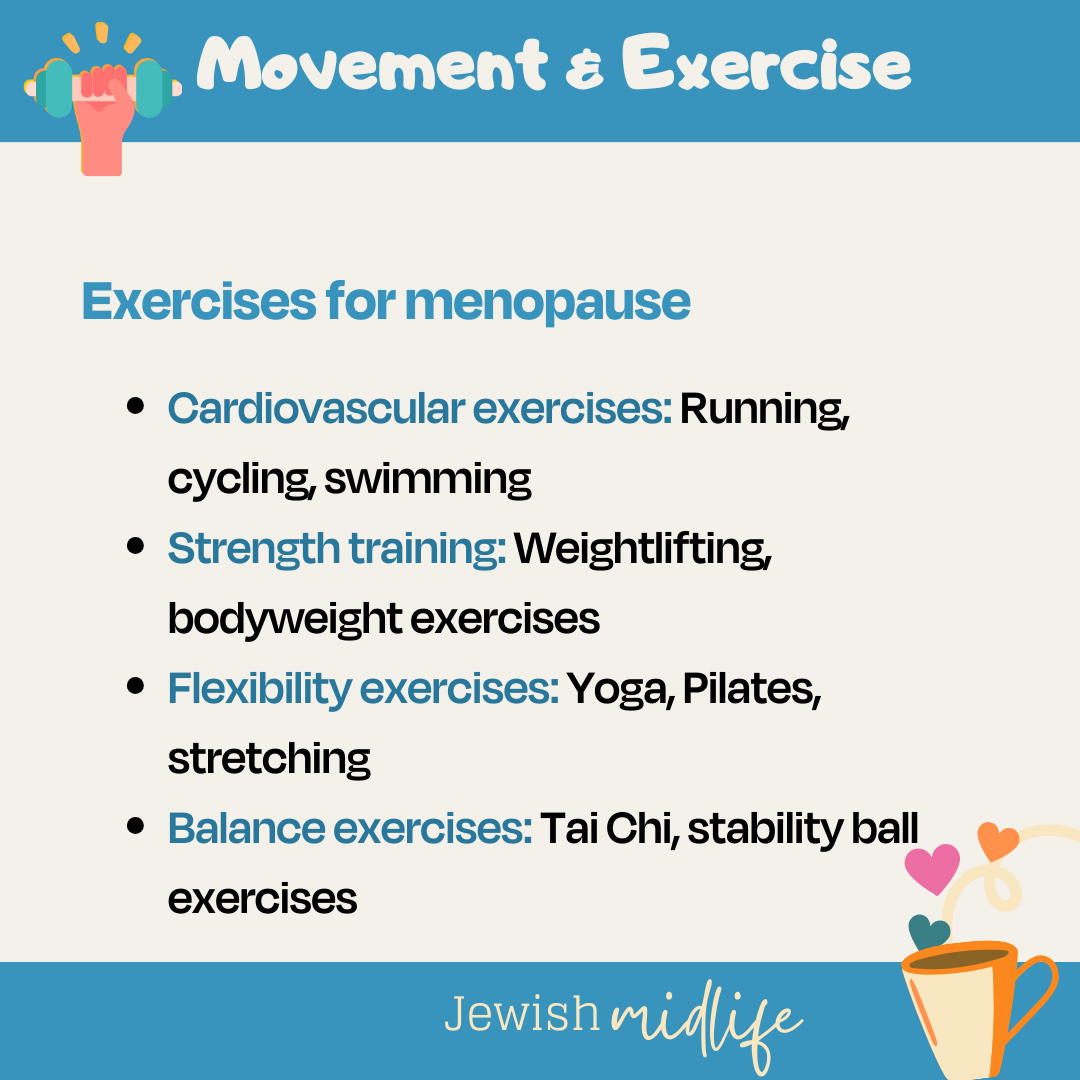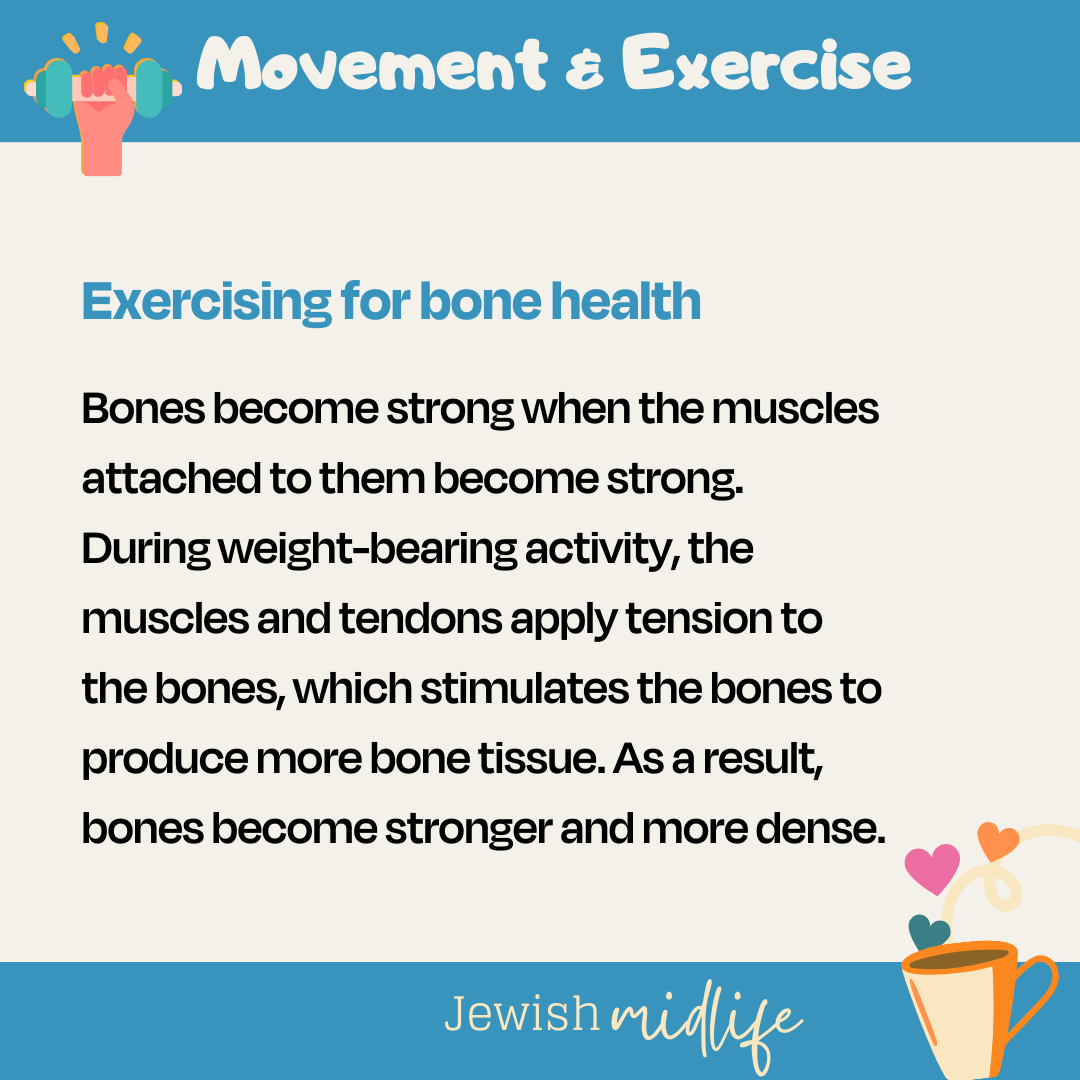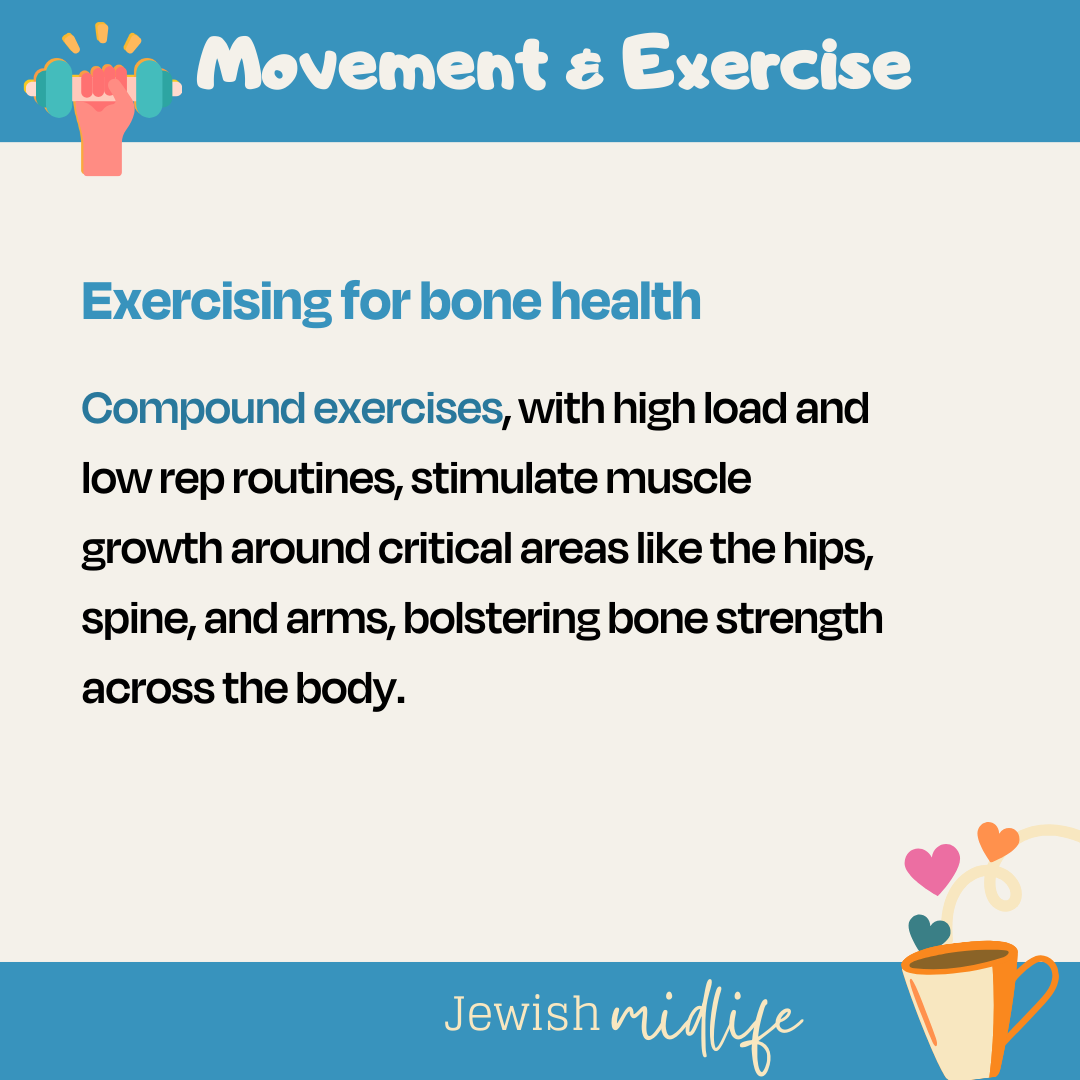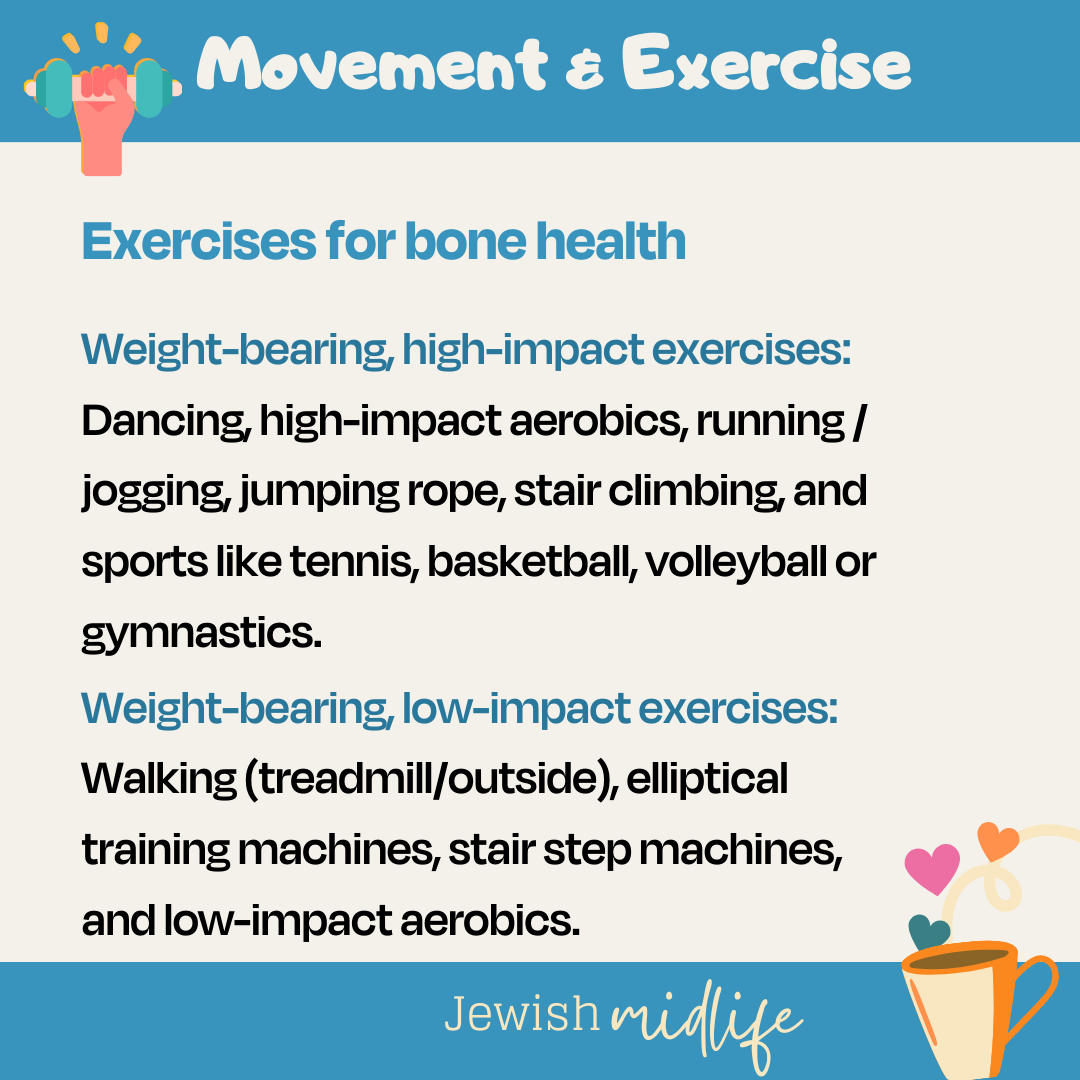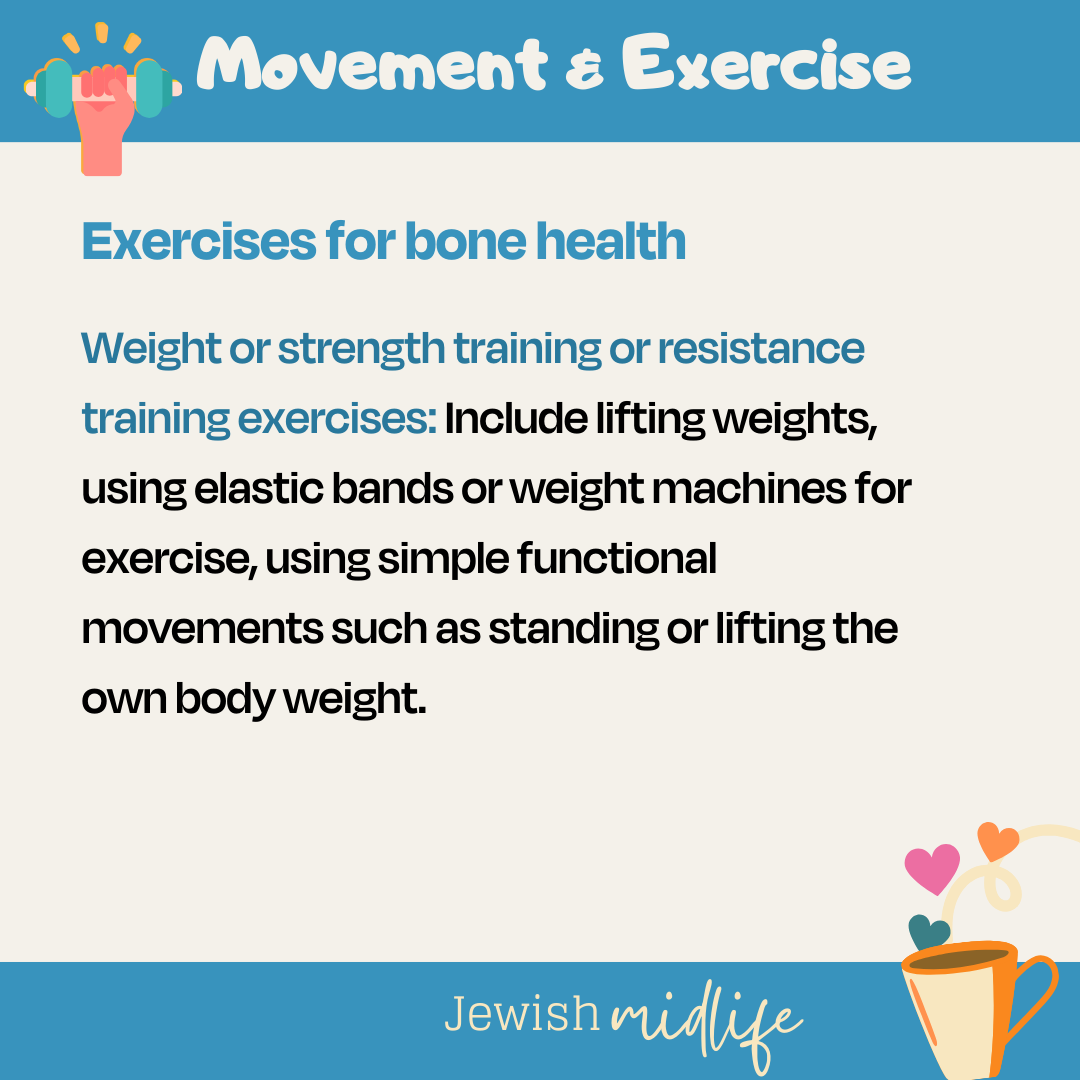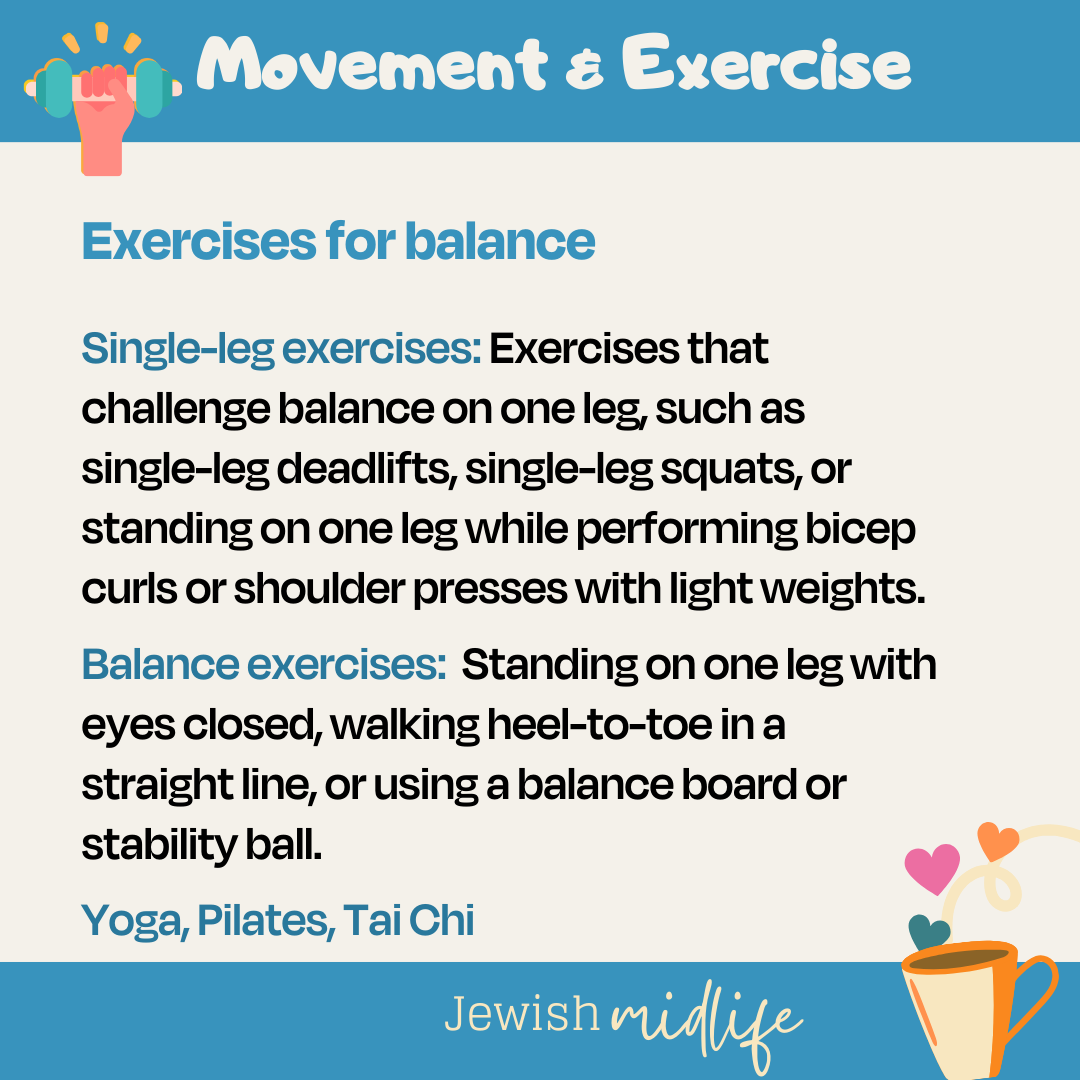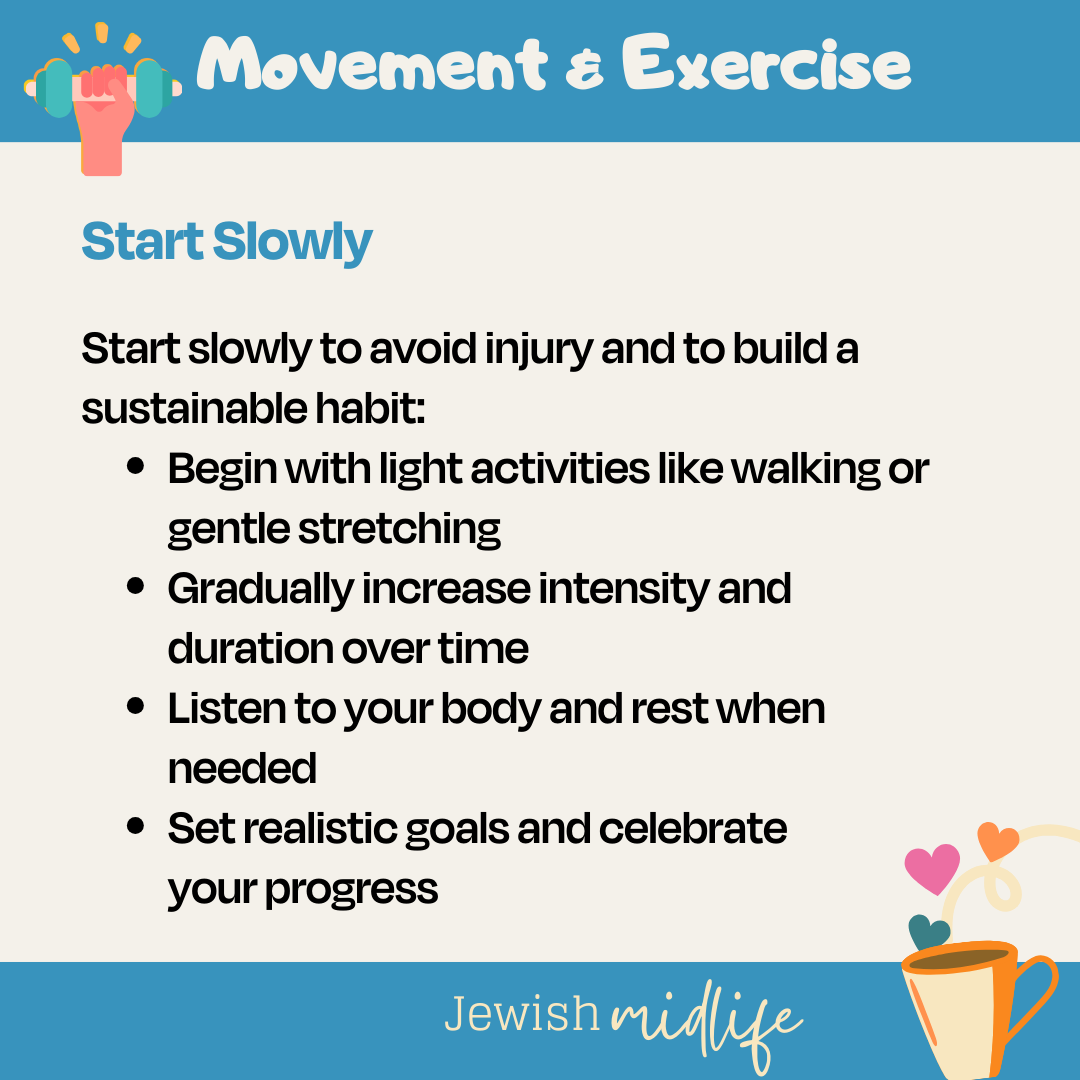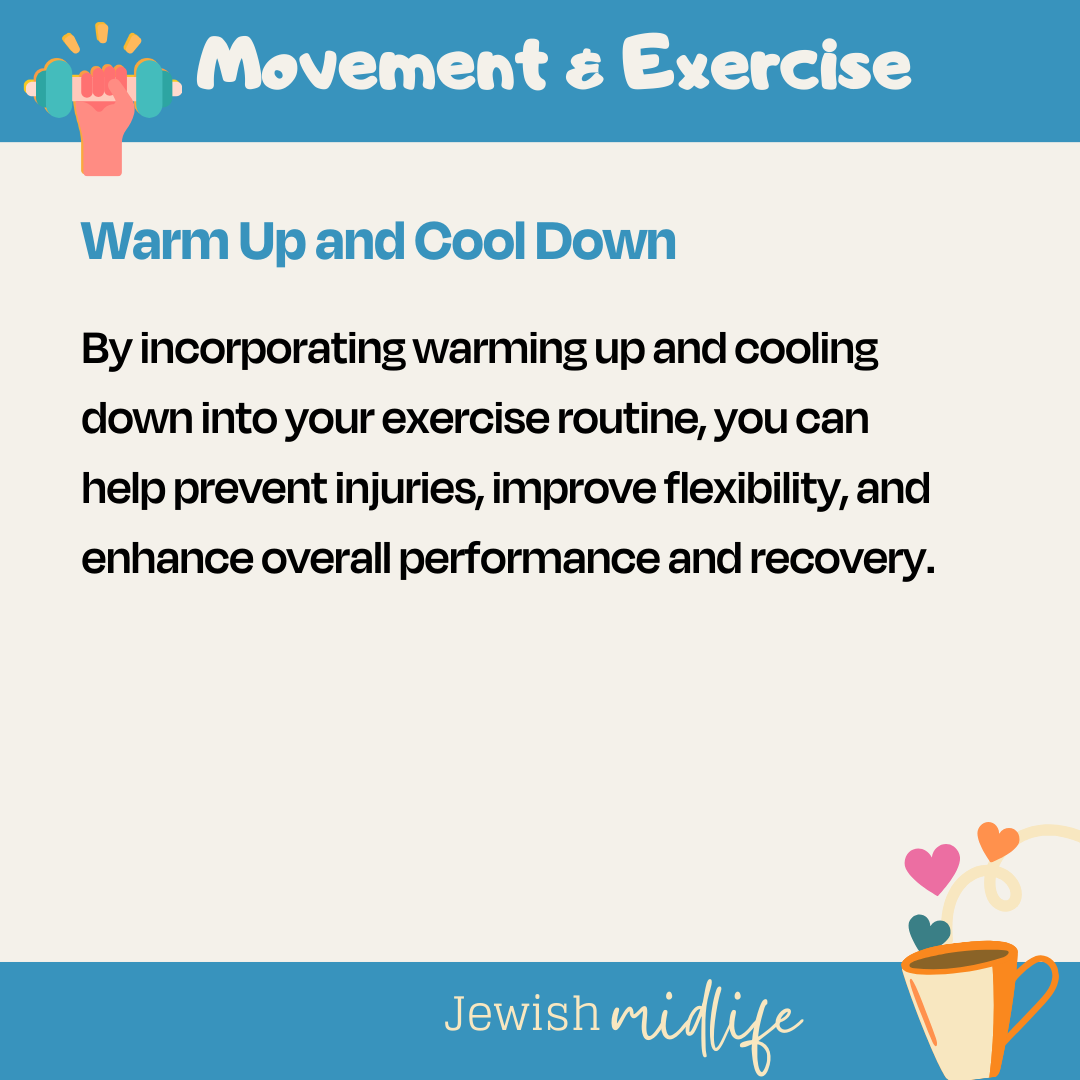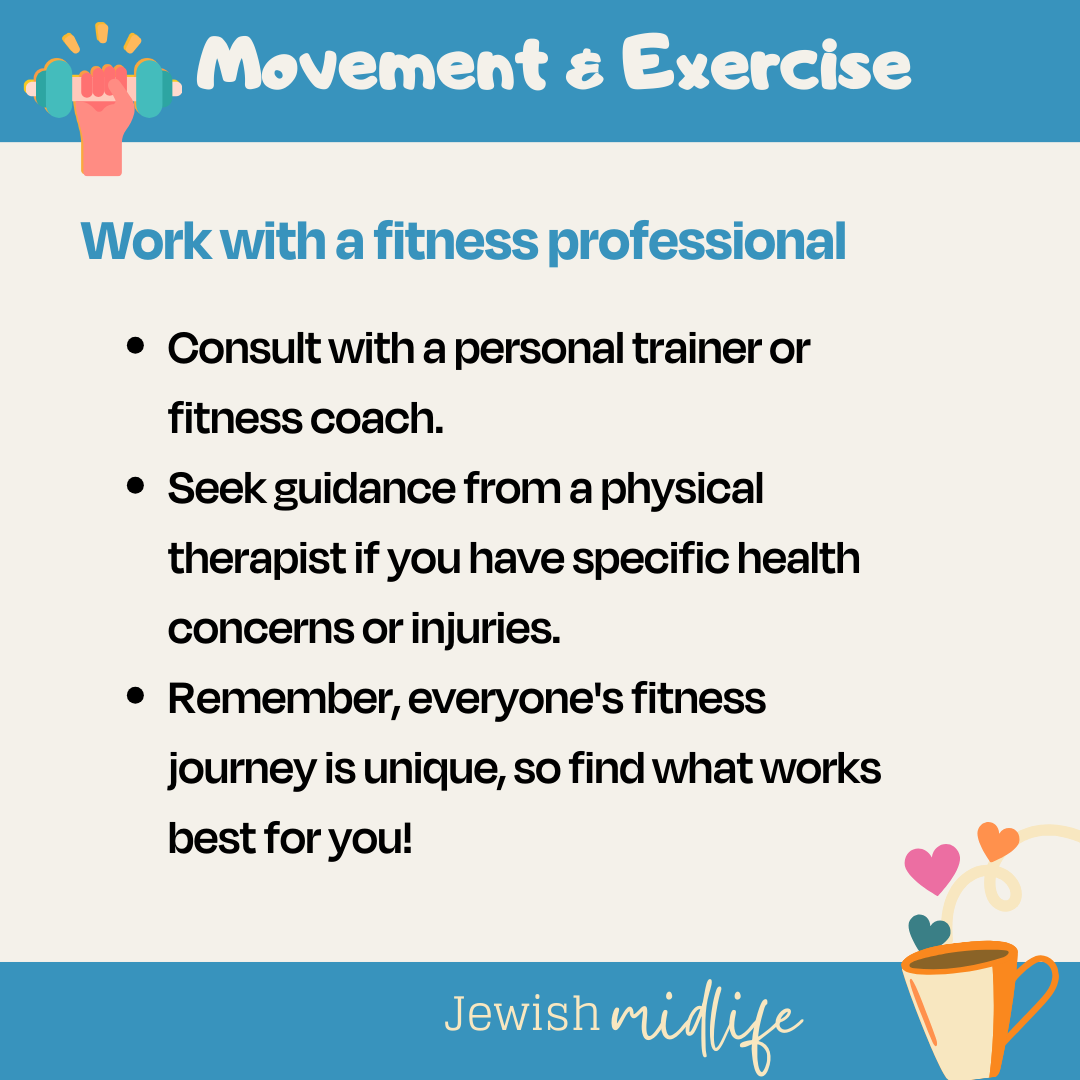Movement and Exercise isn’t just about being thin, it’s about getting fit and strong. It’s about living your best life.
Benefits
- Boosts mood and reduces stress
- Improves heart health
- Increases energy levels
- Helps with weight management
- Enhances sleep quality
- Strengthens muscles and bones
Importance of Movement
Movement is not just about following a strict exercise regimen; it’s about embracing an active lifestyle throughout the day.
Every step you take, every stretch you make contributes to your overall well-being.
Inconvenience Yourself
Embrace these inconveniences as opportunities to move more.
Examples: Take the stairs instead of the elevator, Park farther away from your destination and walk, Carry your groceries instead of using a cart.
Exercises for menopause
Cardiovascular exercises: Running, cycling, swimming
Strength training: Weightlifting, bodyweight exercises
Flexibility exercises: Yoga, Pilates, stretching
Balance exercises: Tai Chi, stability ball exercises
Exercising for bone health
Bones become strong when the muscles attached to them become strong. During weight-bearing activity, the muscles and tendons apply tension to the bones, which stimulates the bones to produce more bone tissue. As a result, bones become stronger and more dense.
Exercising for bone health
Compound exercises, with high load and low rep routines, stimulate muscle growth around critical areas like the hips, spine, and arms, bolstering bone strength across the body.
Exercises for bone health
Compound exercises typically involve multiple muscle groups and joints, making them efficient for building strength.
Examples: Squats, Deadlifts, Bench presses, Overhead presses, Pull-ups, Bent-over rows, Lunges, Dips, Push-ups (weighted), Barbell rows
Weight-bearing, high-impact exercises: Dancing, high-impact aerobics, running / jogging, jumping rope, stair climbing, and sports like tennis, basketball, volleyball or gymnastics.
Weight-bearing, low-impact exercises: Walking (treadmill/outside), elliptical training machines, stair step machines, and low-impact aerobics.
Weight or strength training or resistance training exercises: Include lifting weights, using elastic bands or weight machines for exercise, using simple functional movements such as standing or lifting the own body weight.
Exercises for balance
Single-leg exercises: Exercises that challenge balance on one leg, such as single-leg deadlifts, single-leg squats, or standing on one leg while performing bicep curls or shoulder presses with light weights.
Balance exercises: Standing on one leg with eyes closed, walking heel-to-toe in a straight line, or using a balance board or stability ball.
Yoga, Pilates, Tai Chi
Start Slowly
Start slowly to avoid injury and to build a sustainable habit: Begin with light activities like walking or gentle stretching, Gradually increase intensity and duration over time, Listen to your body and rest when needed, Set realistic goals and celebrate your progress
Warm Up and Cool Down
By incorporating warming up and cooling down into your exercise routine, you can help prevent injuries, improve flexibility, and enhance overall performance and recovery.
Work with a fitness professional
Consult with a personal trainer or fitness coach. Seek guidance from a physical therapist if you have specific health concerns or injuries.
Remember, everyone’s fitness journey is unique, so find what works best for you!

